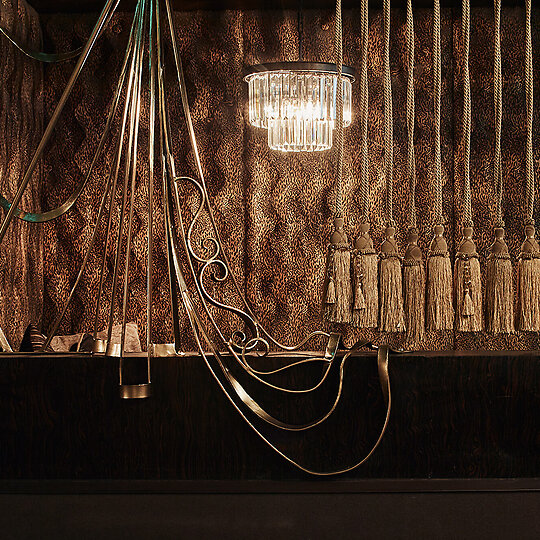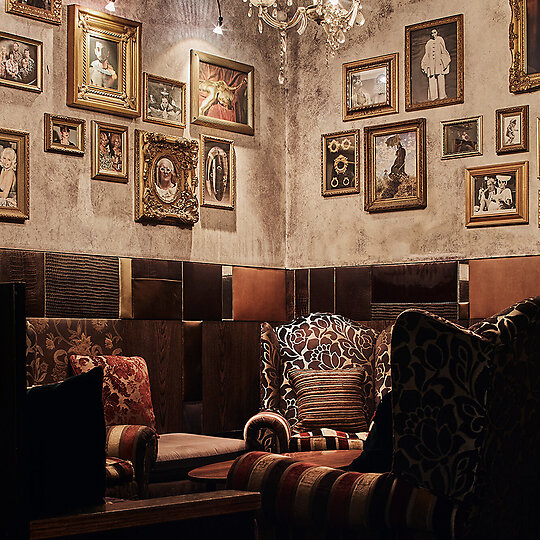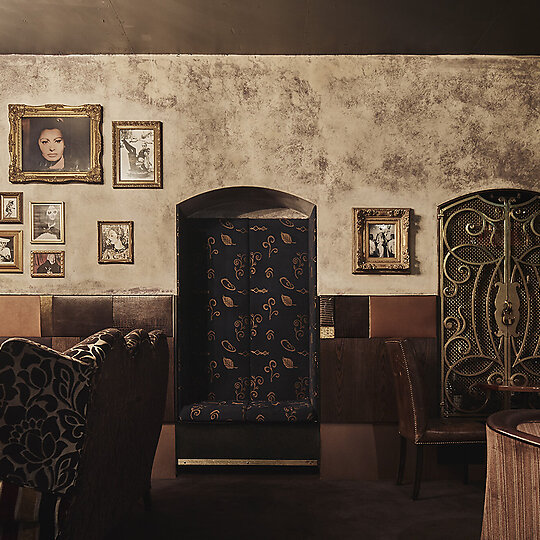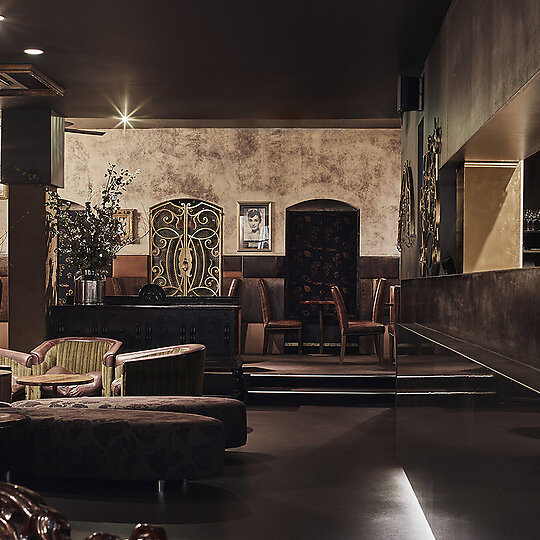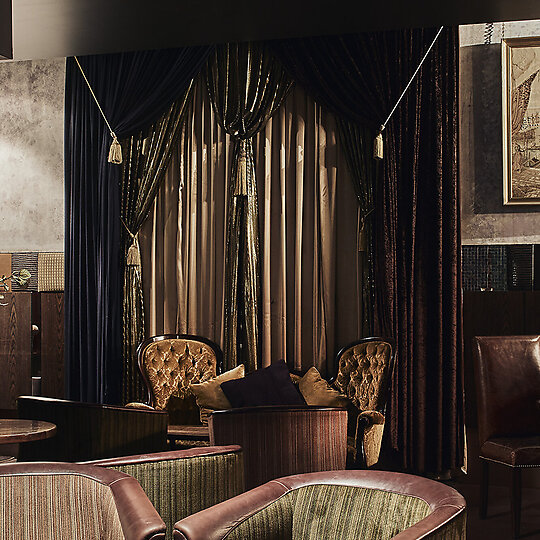2020 Gallery
Inductee: Hall of Fame
Skidmark Designs with Garner Davis Architects for Gin Palace
10 Russell Pl
MELBOURNE, Victoria
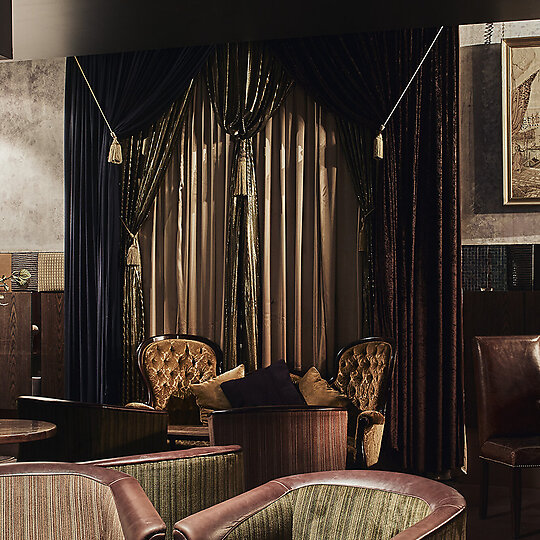
The laneway bars of Melbourne are so embedded in the city’s identity it’s easy to forget that until the mid-1990s, when liquor licence laws were relaxed, the CBD was referred to as “the doughnut”: all fringe, no beating heart. I suppose it’s heartening, at a time when Melbourne is fighting to regain its reputation as one of the world’s most liveable cities, to think that the small bar culture responsible for much of that praise bloomed from nothing just 25 years ago. It was a revolution that made a city, and leading the charge was Vernon Chalker’s Gin Palace.
It wasn’t the first small bar to land, hitting Russell Place in 1997, but the silky bohemian dream that encouraged loose morals yet offered impeccable product and service, set the bar against which countless others were measured. It is fitting to reflect upon this venue’s contribution to Melbourne’s bar culture in a year that marked the passing of Chalker, a rare visionary whose influence has trickled down through generations of bartenders.
According to Gin Palace designer Michael Anderson of Skidmark Designs, who worked as a waiter with Chalker before turning to theatre design, Chalker and his three silent partners wanted the subterranean lair to be a haven “where you could get a high-quality, beautifully prepared cocktail, but hold a proper conversation.” At the time, this was rare. “Everywhere had music, or you couldn’t hear over a large-screen TV,” Anderson recalls. “Vernon wanted it to feel like a vestige of old Melbourne, like it had been there forever, without slavishly copying twentieth-century interiors.”
Garner Davis Architects was tasked with building the shell, but Anderson’s theatrical experience was called upon to add “a layer of lushness.” He met the brief with lavish fabrics, a “collision of chandeliers,” and a heavily-cushioned platform the size of a double bed that he calls Melbourne’s most provocative seating area. It was a celebration of excess almost to the point of the ridiculous. According to Anderson, when Chalker couldn’t remove the ugly vents in the ceiling, they emphasized them with heavy gilt frames. “We would laugh about the minimalist aesthetic, joking that, ‘less is more, but more is better.’”
The product and service was also a driver. Ben Luzz, a current owner, started working at Gin Palace in 2001. He recalls how game-changing the venue was. “Table service in bars at that time was rare. Vernon wanted to deliver silver service, so you only had to get up from your seat for the bathroom, or to leave.” This ideal was factored into the bar itself, which had no seats and instead was a glittering showpiece, “like a grandstand for the international collection of gins,” according to Anderson.
The lavish aesthetic quickly drew in Melbourne’s artists and writers for frosty martinis and chicken sandwiches. But its hospitable hours (the bar has always opened every night until 3 am, except for the annual staff party) meant it also became a hospitality beacon. In inducting Gin Palace into the Eat Drink Design Awards’ Hall of Fame, the judging panel felt it right to acknowledge the legacy of Chalker and more so, the influence this seemingly silly space had on the very serious reputation of Melbourne. Anderson says, “Vernon believed in the long arc, in creating experiences that people remembered, but also creating venues that were capable of becoming institutions.”
